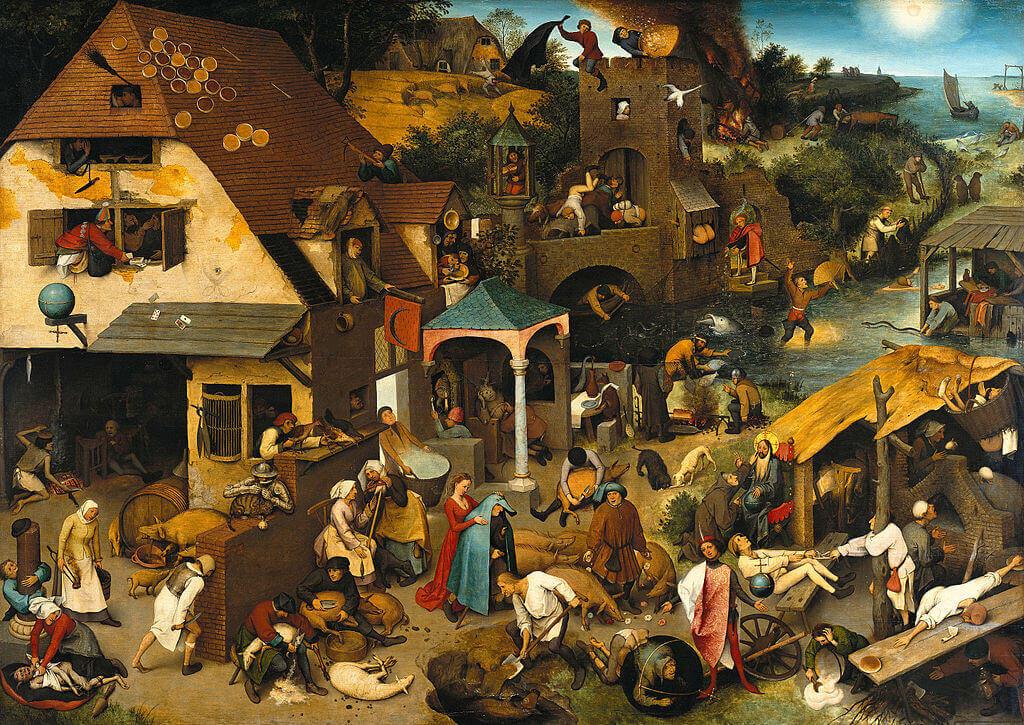
Pieter Brueghel the Younger (Infernal). Copyist or great artist?
Contents:
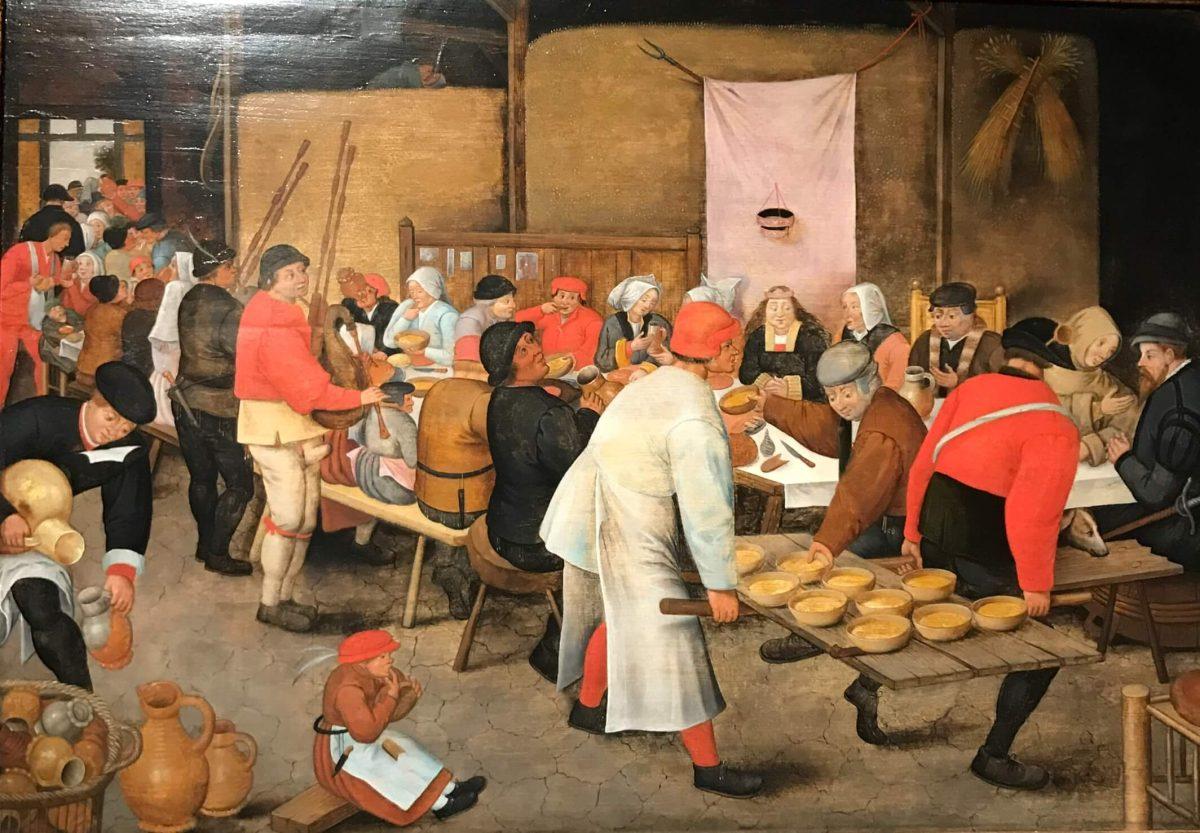
Pieter Brueghel the Younger (1564-1637/1638), or Brueghel the Hell, influenced the development of Netherlandish painting in a special way.
Yes, innovators are the first to remain in the history of art. That is, those who invent new techniques and techniques. Those who work in a way that no one has worked before them. And such innovators worked at the same time as Brueghel the Younger. This is Rembrandt, and Caravaggio, and Velasquez.
Brueghel the Younger was not like that. Therefore, it was forgotten for several centuries. But at the beginning of the XNUMXth century, the realization suddenly came that the value of this artist was completely different ...
In the article I will try to find the answer to who Pieter Brueghel the Younger was. Just a copyist or still a great master?
Unusual becoming an artist
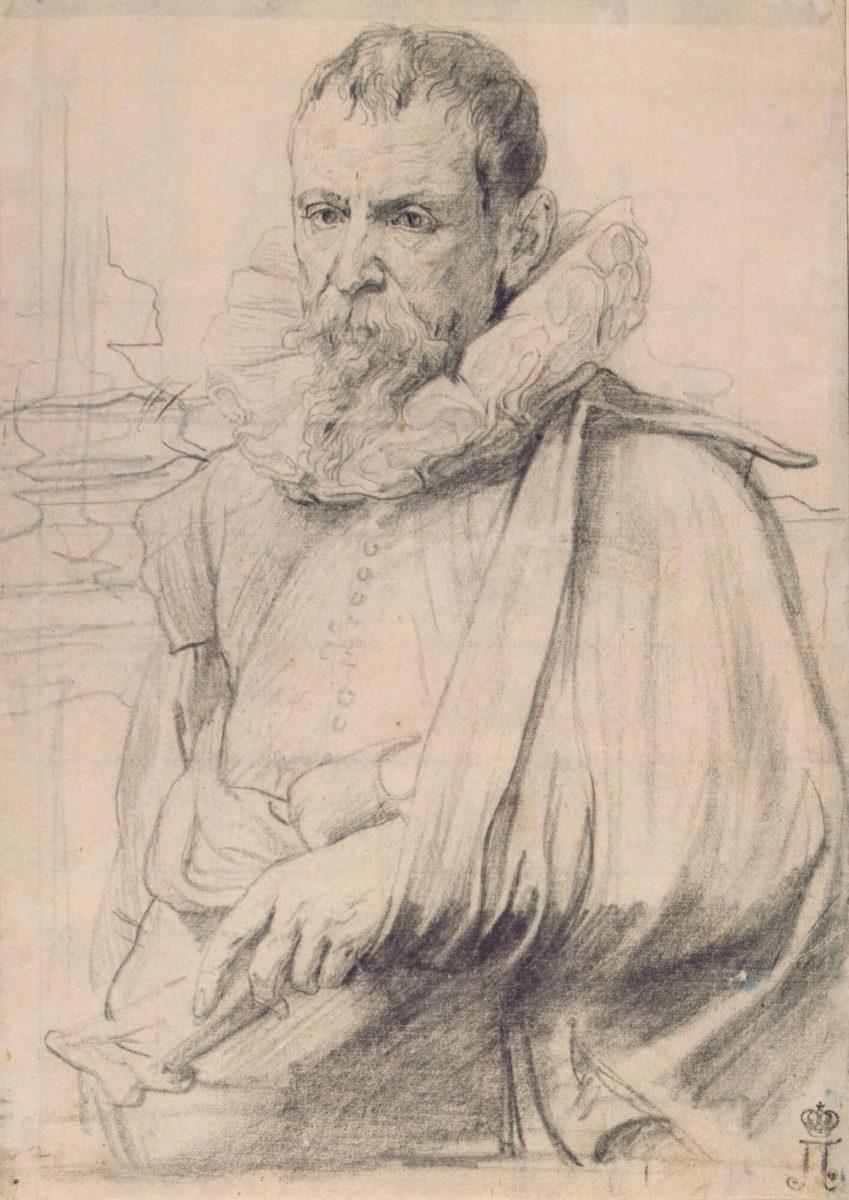
Pieter Brueghel the Younger was 5 years old when his father died. Therefore, he did NOT study with a great master. And at his grandmother, mother-in-law of Pieter Brueghel the Elder, Maria Verhulst Bessemers. Yes, she was also an artist, which is generally unbelievable. That's how lucky Peter is.
A fragment of a copy of his father's work "The Sermon of St. John" depicts Pieter Brueghel the Elder (bearded man at the edge), his mother (a woman in a red dress with arms crossed on her chest) and grandmother (a woman in gray).
He aged them as if they were alive at the time the copy was written. After all, on their father's original, they are still young ... It turned out very touching.
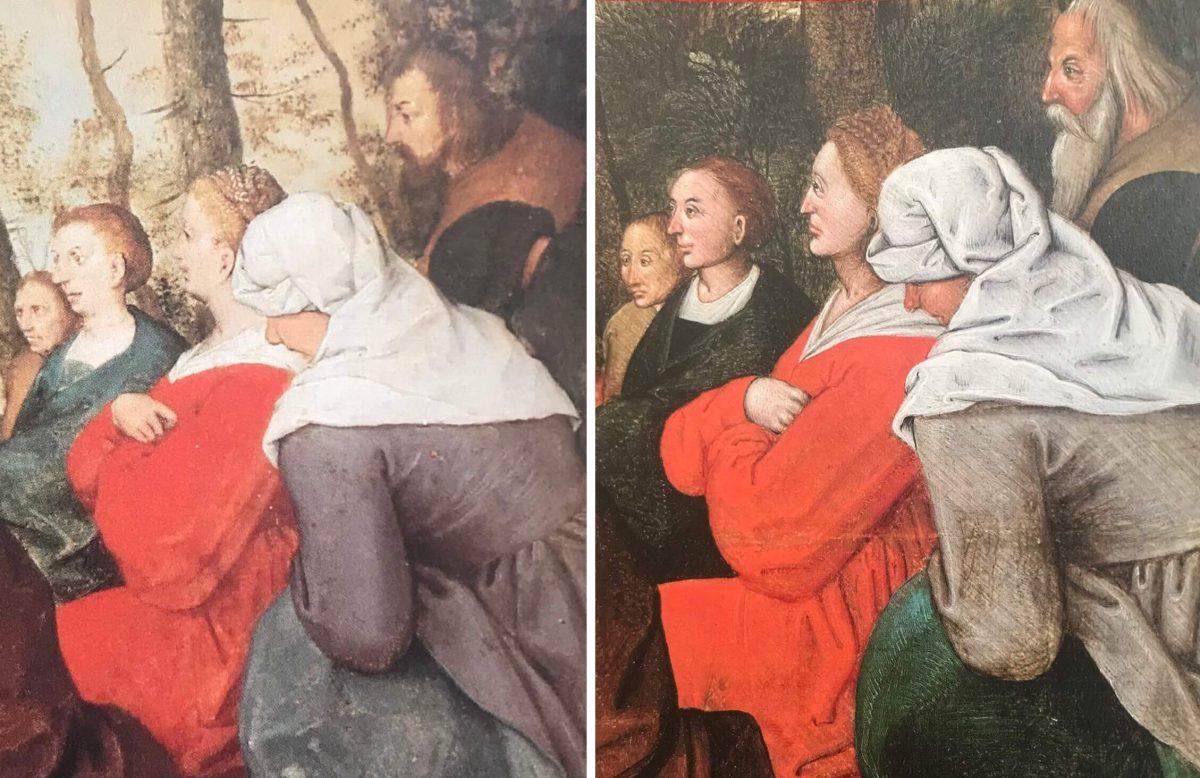
But Maria Bessemers not only taught the boy how to paint, but also gave him something very valuable. Tracing-patterns of the father! By attaching them to the board, it was possible to copy the compositional solution and all the shapes of objects and objects. It was a goldmine! And that's why.
Pieter Brueghel the Elder died quite young, he was not yet 45 years old. At the same time, he became famous during his lifetime. Orders poured in. Therefore, he began to make tracing papers, so that later in the workshop he and his assistants could copy the most sought-after works. But he died. And the demand for his work remained.
Other masters tried to work in his style. The same Kleve. But he didn't have patterns. He could only see the original a couple of times (in the house of the owner of the picture) and then write something similar based on the motives.
For example, this is how he created The Return of the Herd.
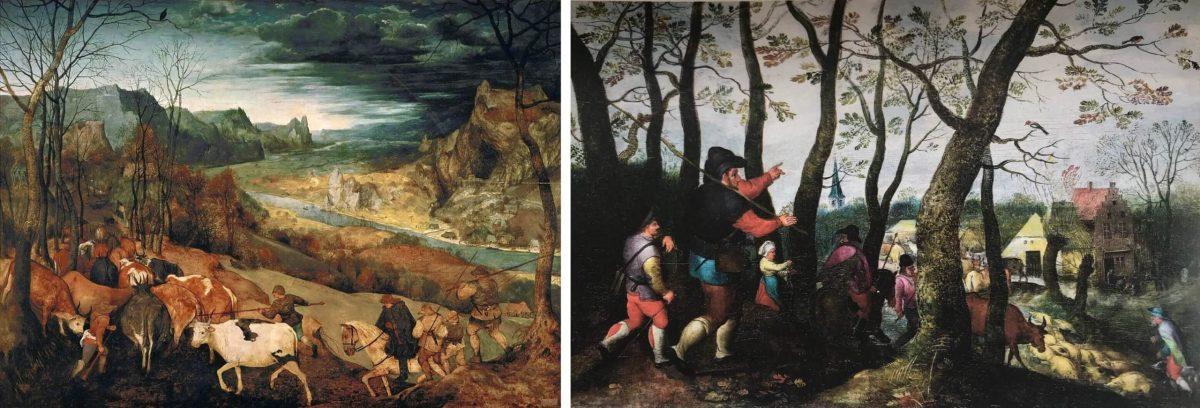
There is something in common, you see. But it's not an exact copy. Cleve misses the majesty of Brueghel's nature. Yes, and the figures of the shepherds are made rougher.
Please note that his hand is written a little higher than necessary. It looks like it's growing out of your ear. Bruegel in this regard created better works in terms of realism.
But the master's son Pieter Brueghel the Younger grows up and becomes a master. He is accepted into the guild of Saint Luke. This happens in the same year that Kleve dies.
Not only does the guy get tracing papers, but also the main imitator of his father dies. And there is still demand. He took the chance and started copying his father's work.
What is the difference between the work of father and son
But here is the most interesting. Comparing the work of the son and father, we notice that they are still different.
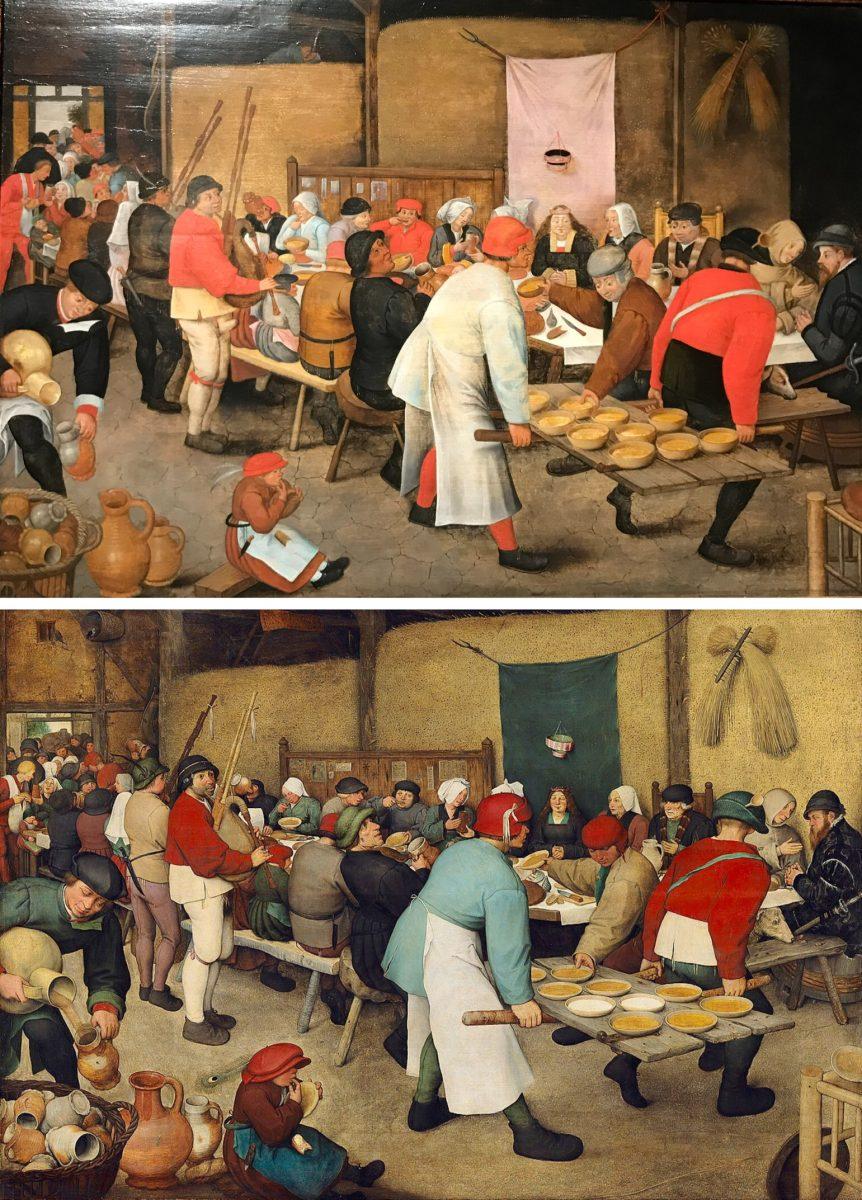
And the main difference is in color. For some reason, the son's color scheme does not always coincide with his father's. I think you can already guess why.
It's all about the slips. The son had them, but he did not always have the opportunity to see the original with his own eyes. And even if there was such an opportunity, it is difficult to remember all the details at once. The painting could have been acquired by collectors from another city. And I only saw the original once. And that is not always the case.
Also note that the son somewhat simplifies the drawing, as a result, the image is more grotesque and close to popular print.
These fragments show how the father is more realistic, and the son is more schematic.
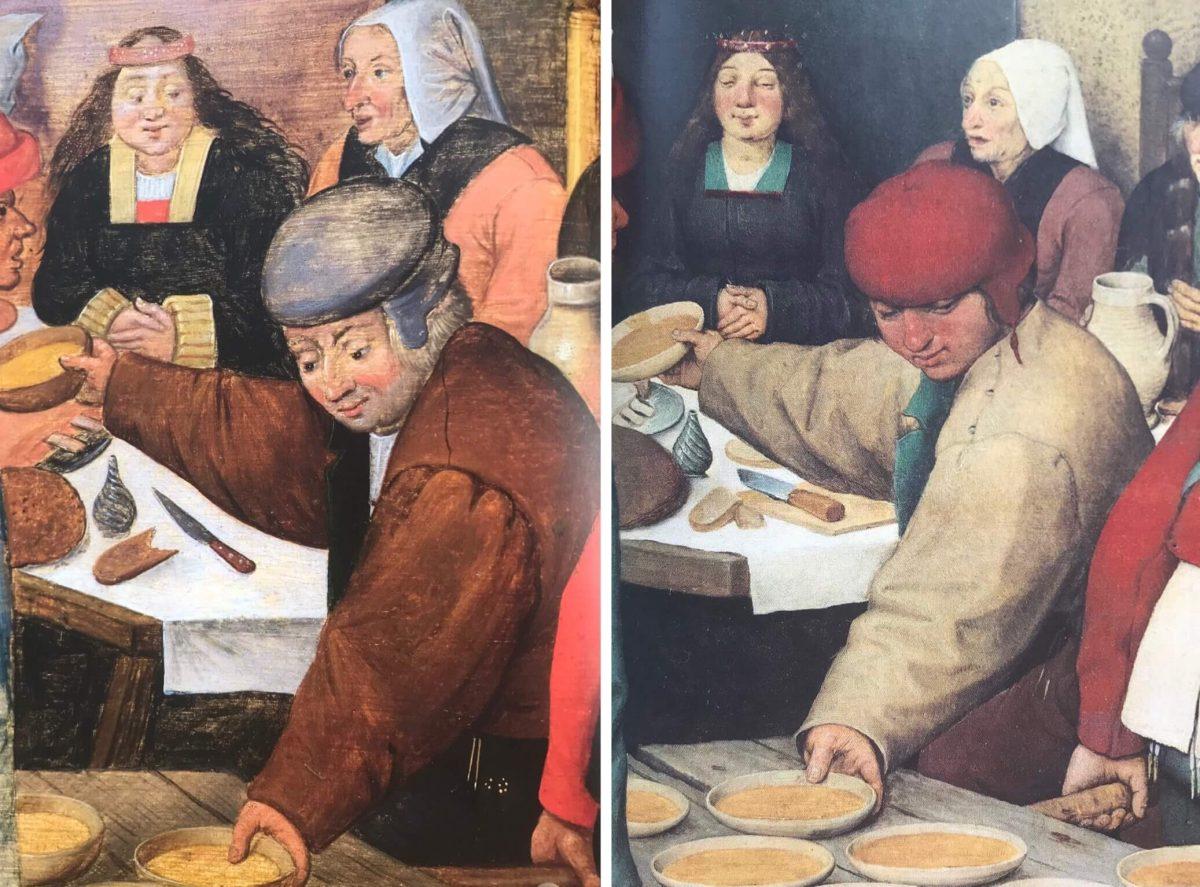
Well, I had to work faster. Making copies required the involvement of assistants who had less skill. And in general, such almost conveyor work did not involve the study of all the details.
In addition, these paintings were sold not to the aristocracy, but to people of lower classes. And Pieter Brueghel the Younger sought to match their tastes. And they liked just such a simple style. Figures and faces are more simplified, which again is clearly seen in comparison.
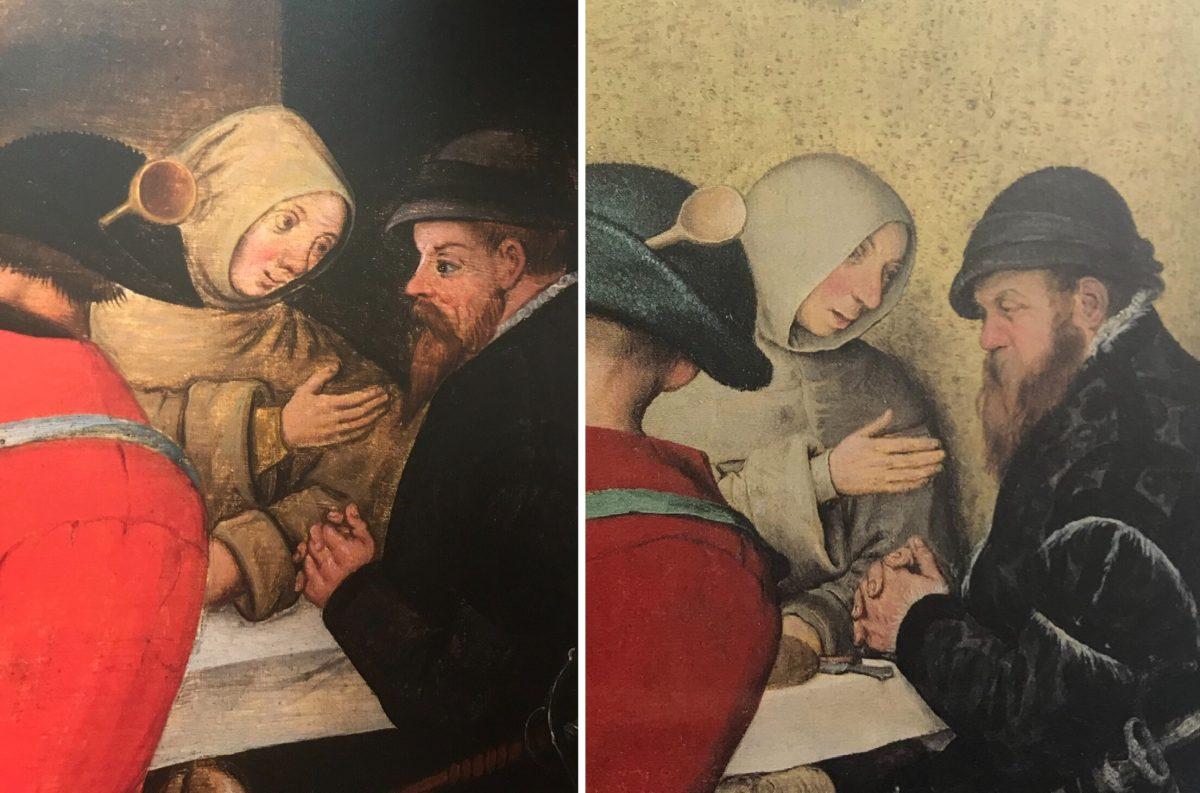
But still, Pieter Brueghel the Younger was actually a very good master, as this work proves.
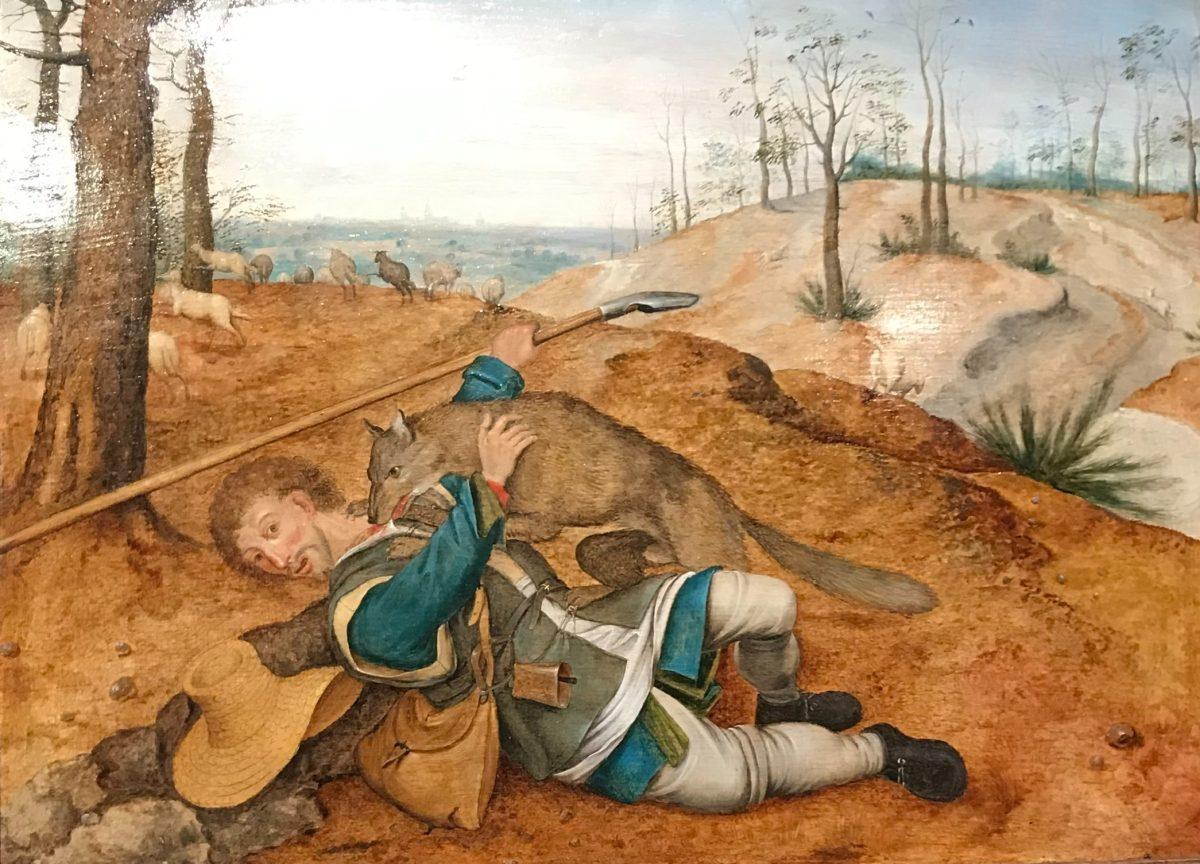
It was also written according to the father's tracing paper, but it was made very high quality. The realistic face of a shepherd, proportionately conveyed the emotions of the unfortunate. And also a landscape very suitable for the tragic scene with rare trees and earth scorched by the sun.
The work is so good in execution that for a long time it was attributed to the father. But still, an analysis of the age of the board proved that it was created later by the master's son using a tracing paper template.
Why else would a son change his father's pictures
There are works that, as they say, are made in carbon copy. Despite their huge number. So, the famous Brueghel's "Bird Trap" Peter Brueghel and his workshop were copied more than a hundred times.
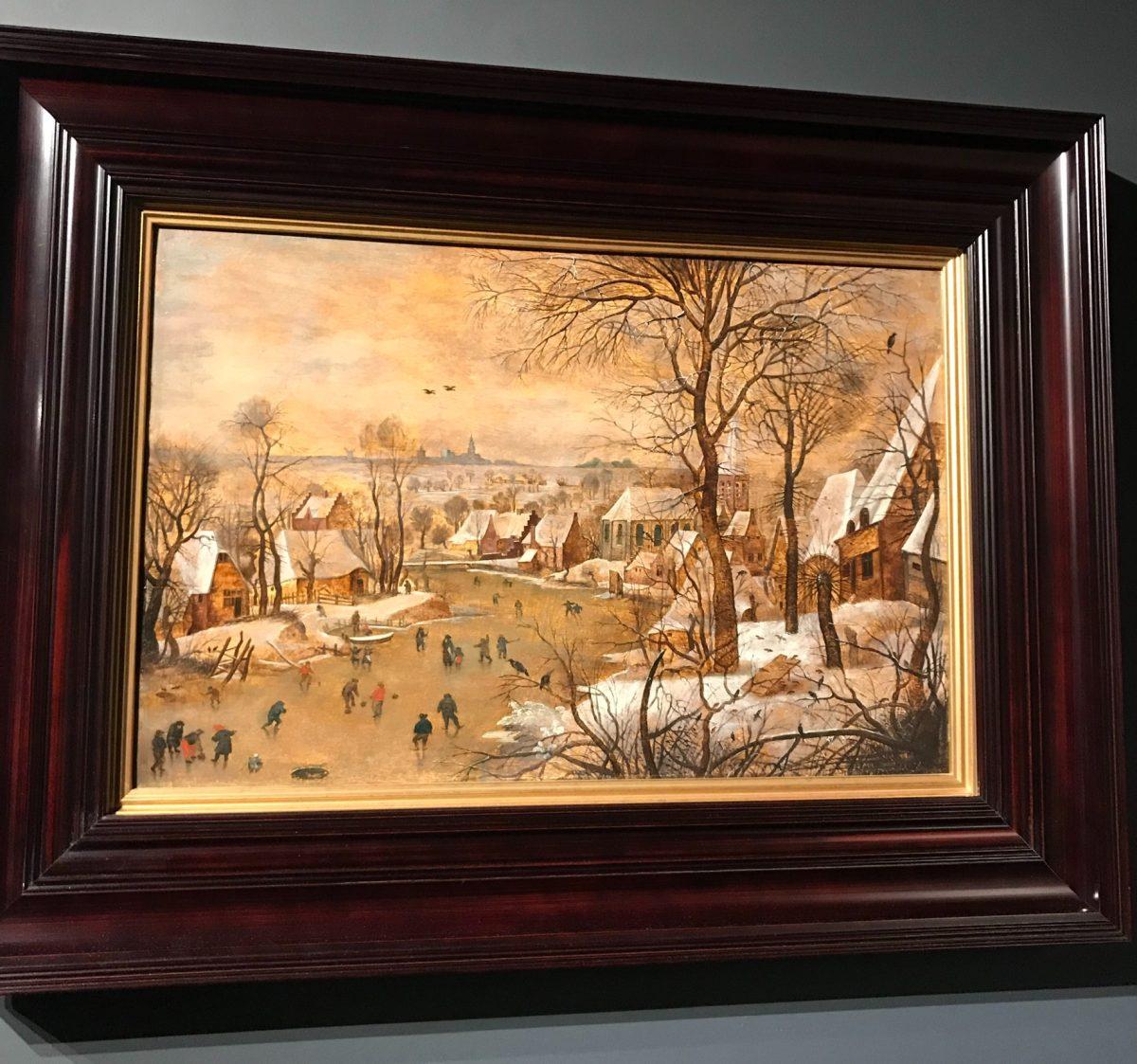
To understand the scale: at least 3 such copies are stored in Russia. In the private collection of Valeria and Vladimir Mauergauz, in the Pushkin Museum in Moscow and in the Hermitage in St. Petersburg. Most likely, there are such copies in other private collections.
I will not even show them all, as they are very similar. And the comparison makes no sense. This is the case when the customer demanded "exactly the same" and Peter did not deviate from the template almost a single step.
Above, we analyzed why the originals and replicas did not match the colors.
But sometimes Brueghel the Younger changed the composition of his father. And he did it on purpose. Look at two of their paintings.
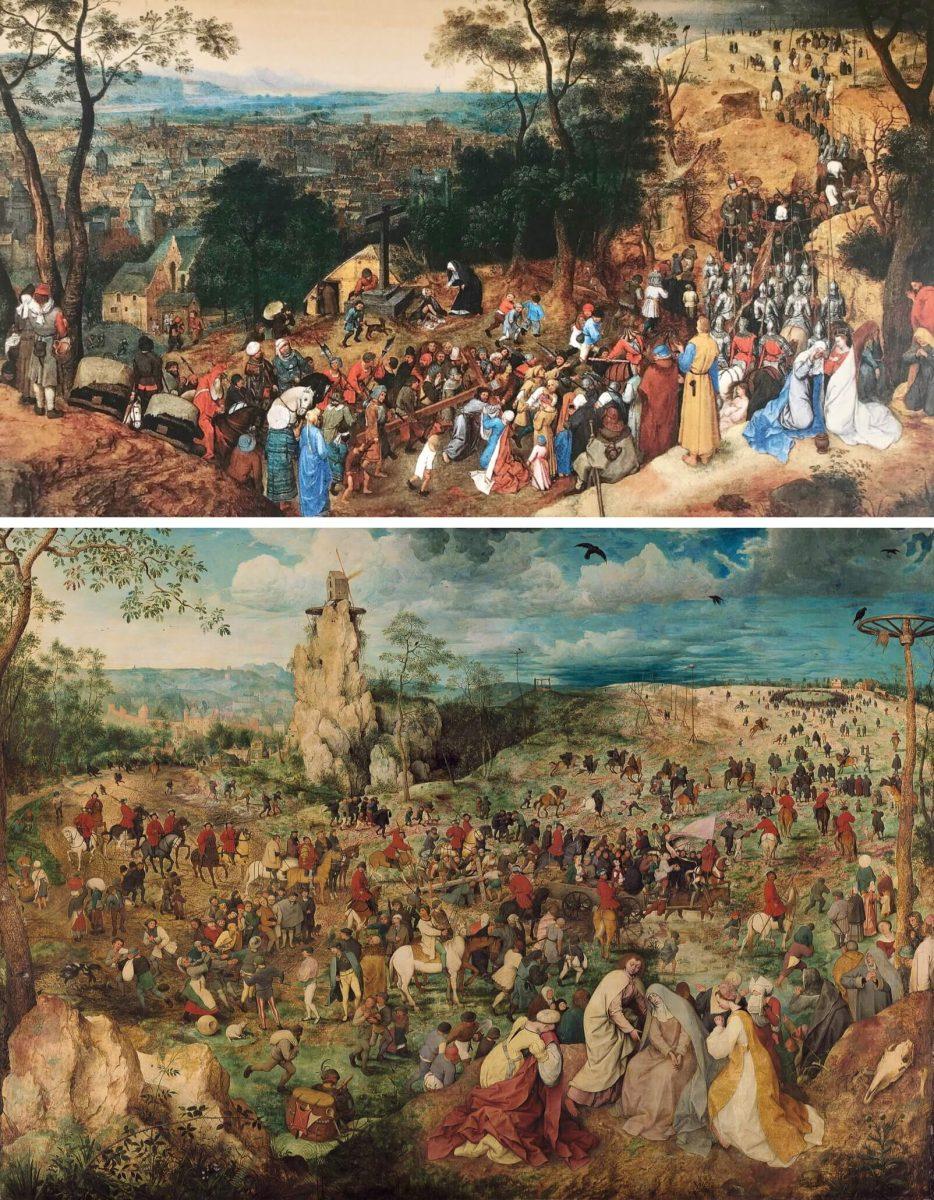
At the father, Christ with the cross is lost in the crowd. And if you have not seen this picture before, then it will take you some time to find the main character. The Son, on the other hand, makes the figure of Christ larger and places it in the foreground. You can see it almost immediately.
Why did the son change the composition so much without using the finished tracing paper? Again, it's up to the tastes of the customers.
Pieter Brueghel the Elder laid down a certain philosophy, portraying the protagonist in such a small way. After all, for us, the crucifixion of Christ is the key and most tragic event of the Bible. We understand how much he did to save people.
But the contemporaries of Christ hardly understood this, apart from a small group close to the Son of God. The people didn't care who was being led there to Golgotha. Except in terms of spectacle. This event was lost in a pile of their daily worries and thoughts.
But Pieter Brueghel the Younger did not complicate the plot so much. Customers needed just "The Way to Calvary." No multi-layered meanings.

He also simplified his father's idea of the Seven Works of Mercy.
The picture was created according to a phrase from the Gospel of Matthew. It says that they fed him, gave him drink, clothed him, went to the sick man, visited him in custody, as a traveler was received. In the Middle Ages, another act of mercy was added to his words - burial according to Christian laws.
On the engraving by Pieter Brueghel the Elder, we see not only all seven good deeds, but also an allegory of mercy - a girl in the center with a bird on her head.
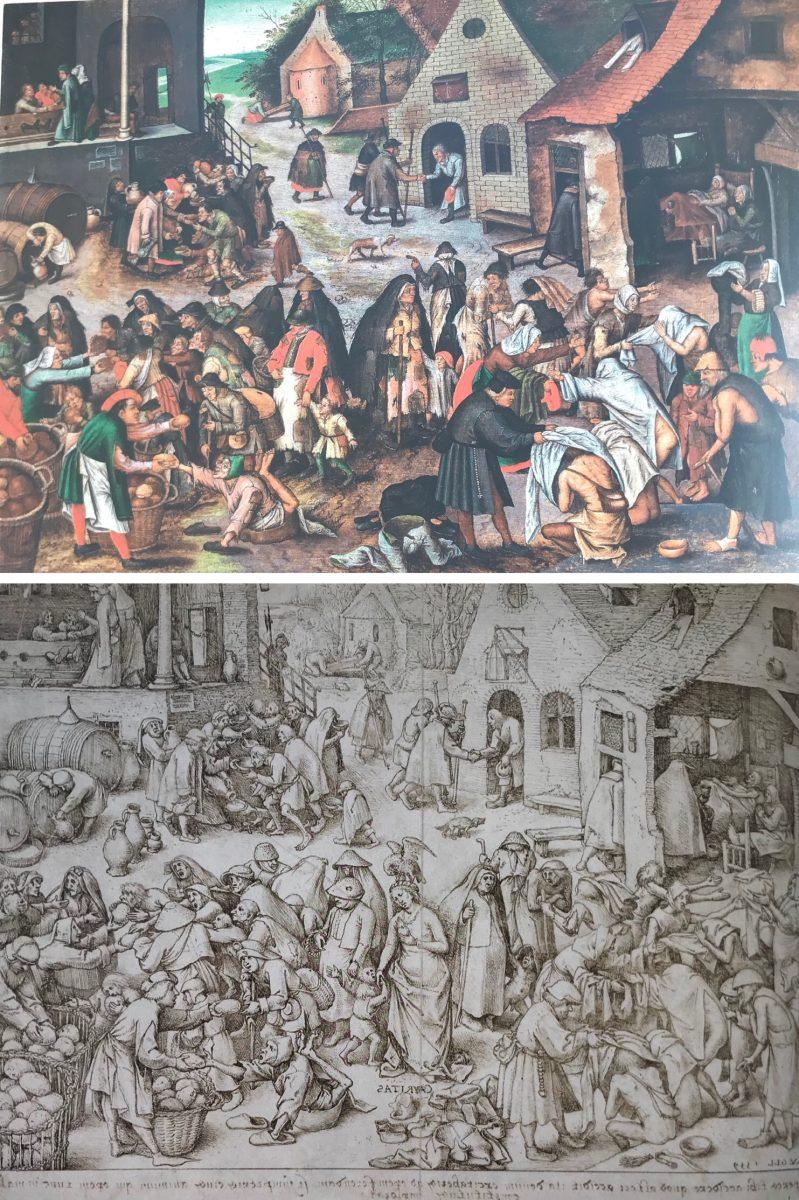
And the son did not begin to portray her and turned the scene into almost just a genre scene. Although we still see all the works of mercy on it.
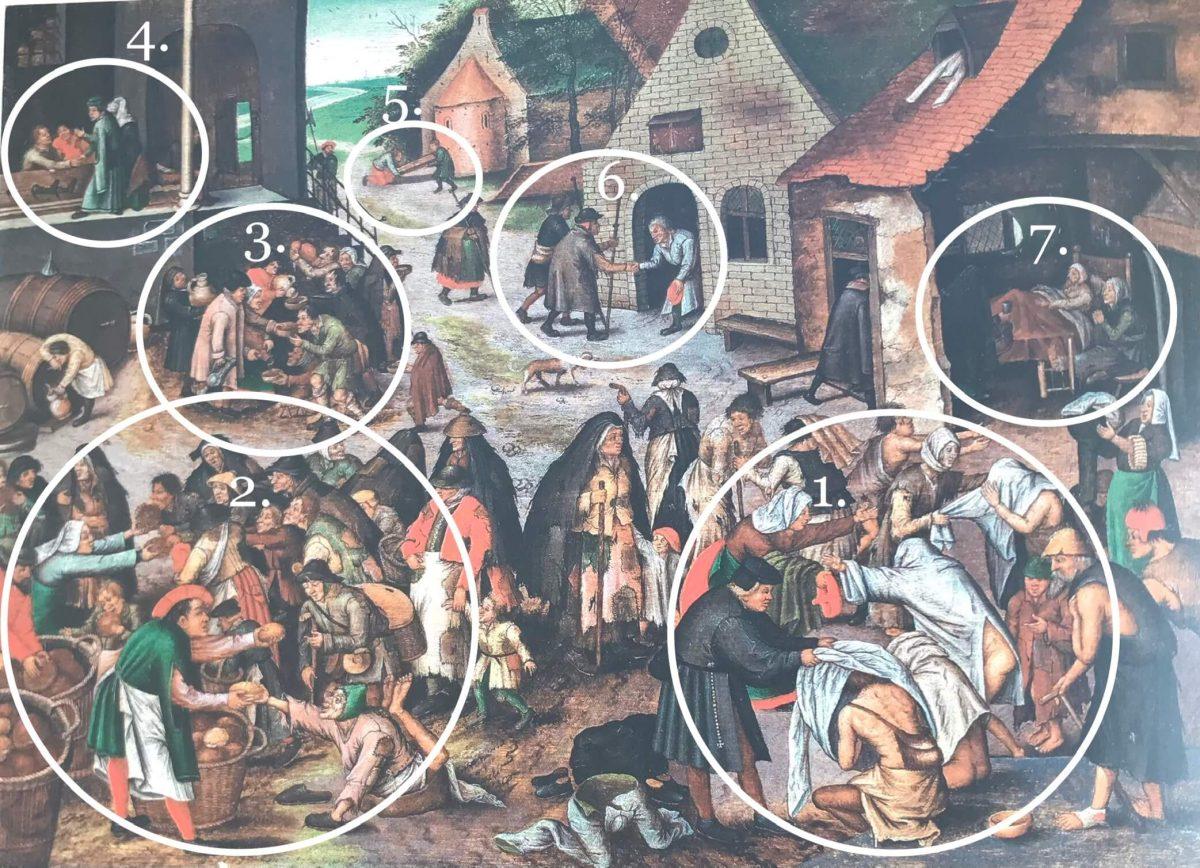
NOT paternal legacy
It is important to note that Pieter Brueghel of Hell created replicas not only of his father. And right here I will explain why he was called Infernal.
After all, he tried to work in the style of Bosch, creating fantastic creatures. Therefore, he was nicknamed Infernal, just because of these early works.
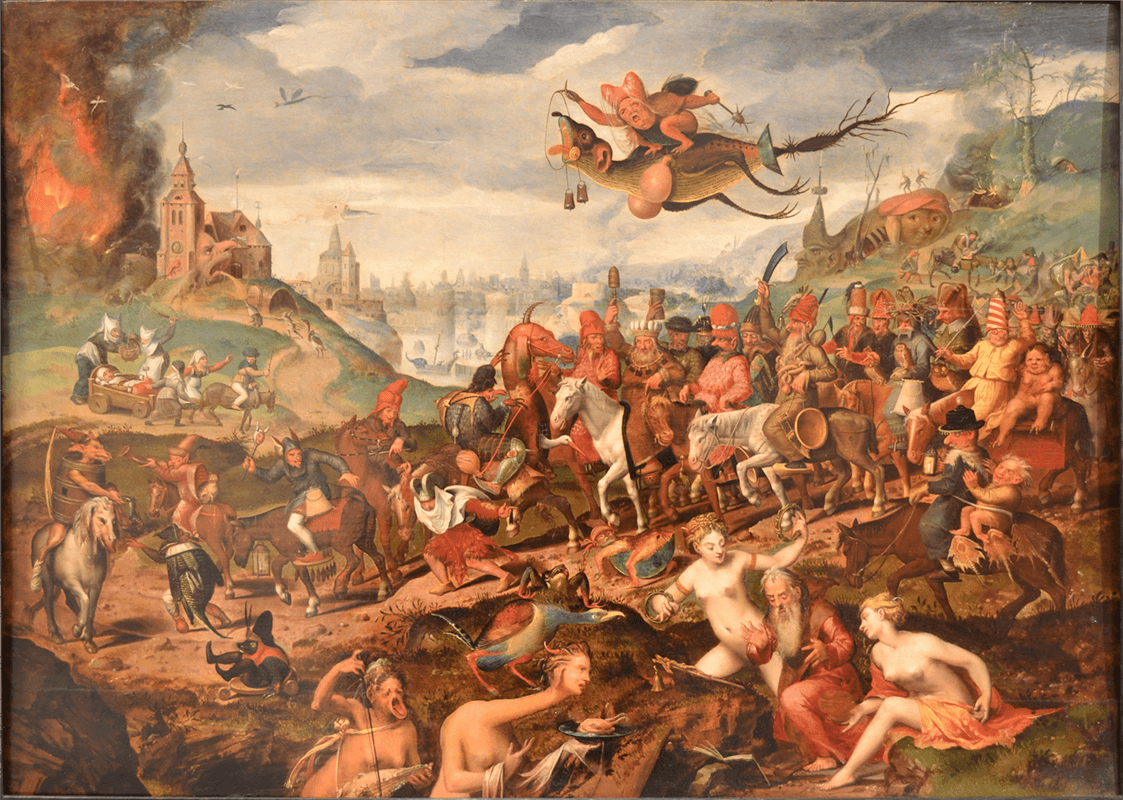
But then the demand for Boschian fantasies faded: people wanted more genre scenes. And the artist switched to them. But the nickname has taken root so much that it has come down to our times.
And the French also loved genre scenes. And with a more pronounced satirical beginning. It was from the French work that the artist made a replica of "The Village Lawyer".
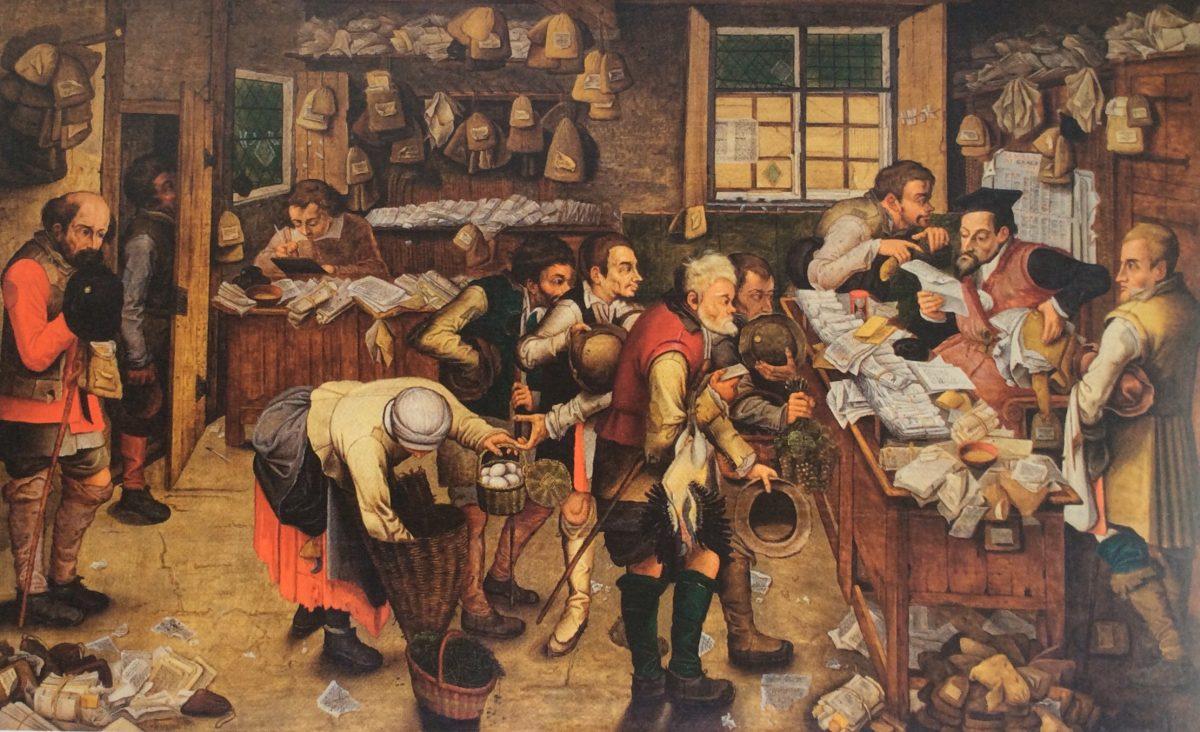
You see, even the wall calendar remained in French. And here it is satire, ridiculing the work of tax lawyers ...
It was a very popular genre scene, so the artist and his workshop made quite a few replicas.
Dutch proverbs
Where without Dutch proverbs! You probably know the incredible painting by Pieter Brueghel the Elder on this subject. I wrote about her here article.
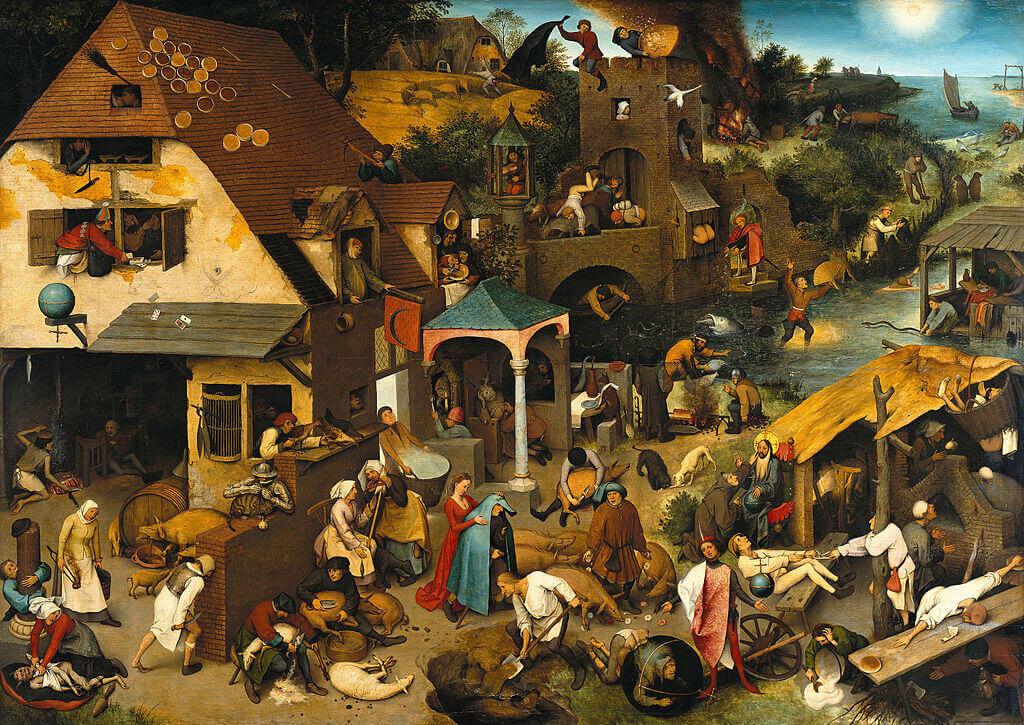
At the beginning of the XNUMXth century, the topic did not lose its relevance. However, it was already in trend to hang decorative plates on the walls, on which one or another proverb was visually told.
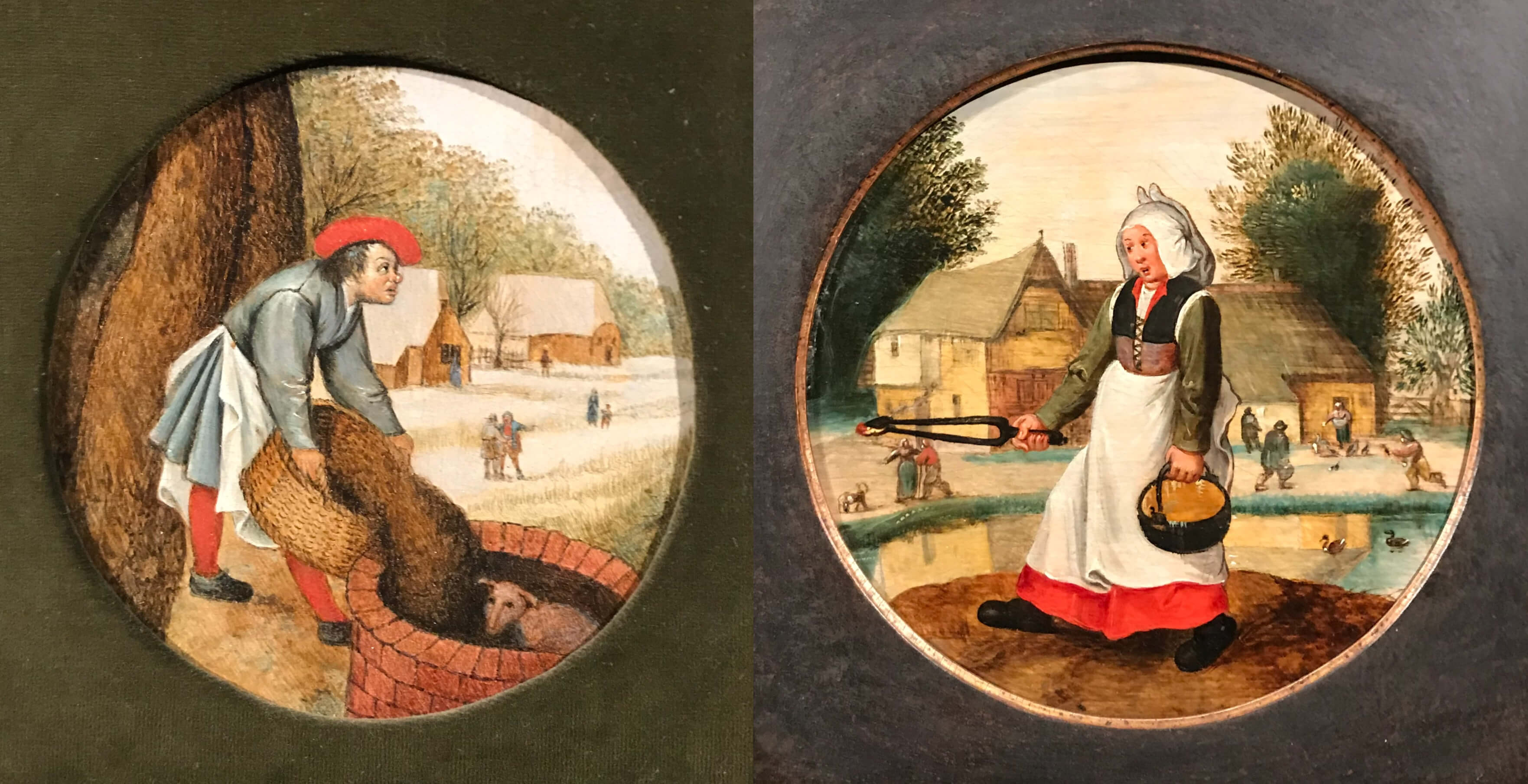
On the left, Brueghel shows that “they don’t wave their fists after a fight” and that there is no longer any point in burying a well, since a calf has already died in it.
But on the right, the dual nature of some people is shown, when they say one thing in person, but think something completely different. As if they carry both water and fire at the same time.
Pieter Brueghel the Younger in Russia
In the middle of the XNUMXth century, interest in Bruegel began to fade. And it resumed only at the beginning of the XNUMXth century! But the prices for their work in connection with this soared. Not a single Pieter Brueghel the Elder was acquired for the collection of the Hermitage and the Pushkin Museum. But there were several works of his eldest son.
Three works are kept in the Pushkin Museum. Including Spring. Work in the garden.
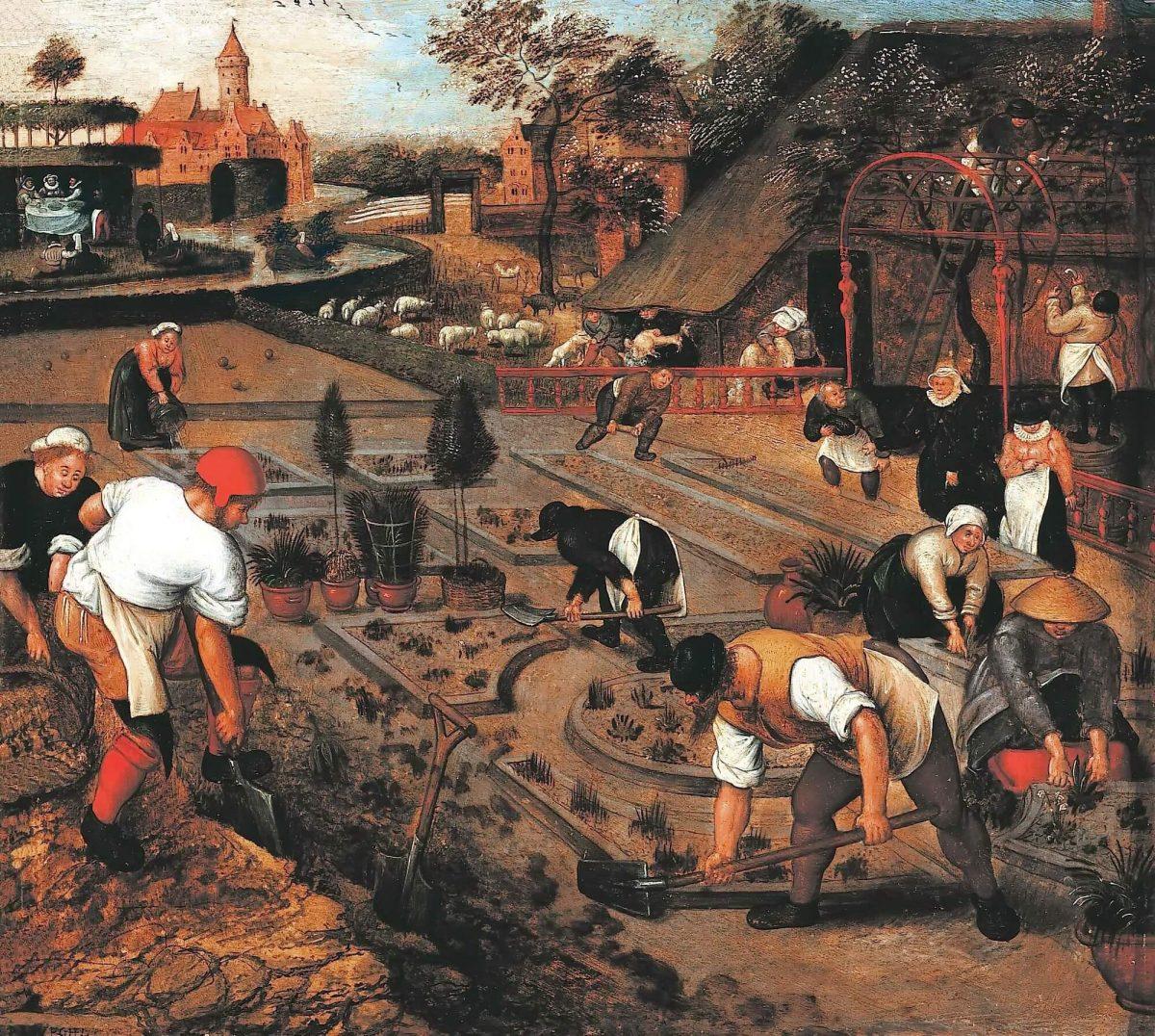
In the Hermitage - 9 works. One of the most interesting - "Fair with a theatrical performance" - was acquired from a collector only in 1939, just in the wake of a renewed interest in this artist.
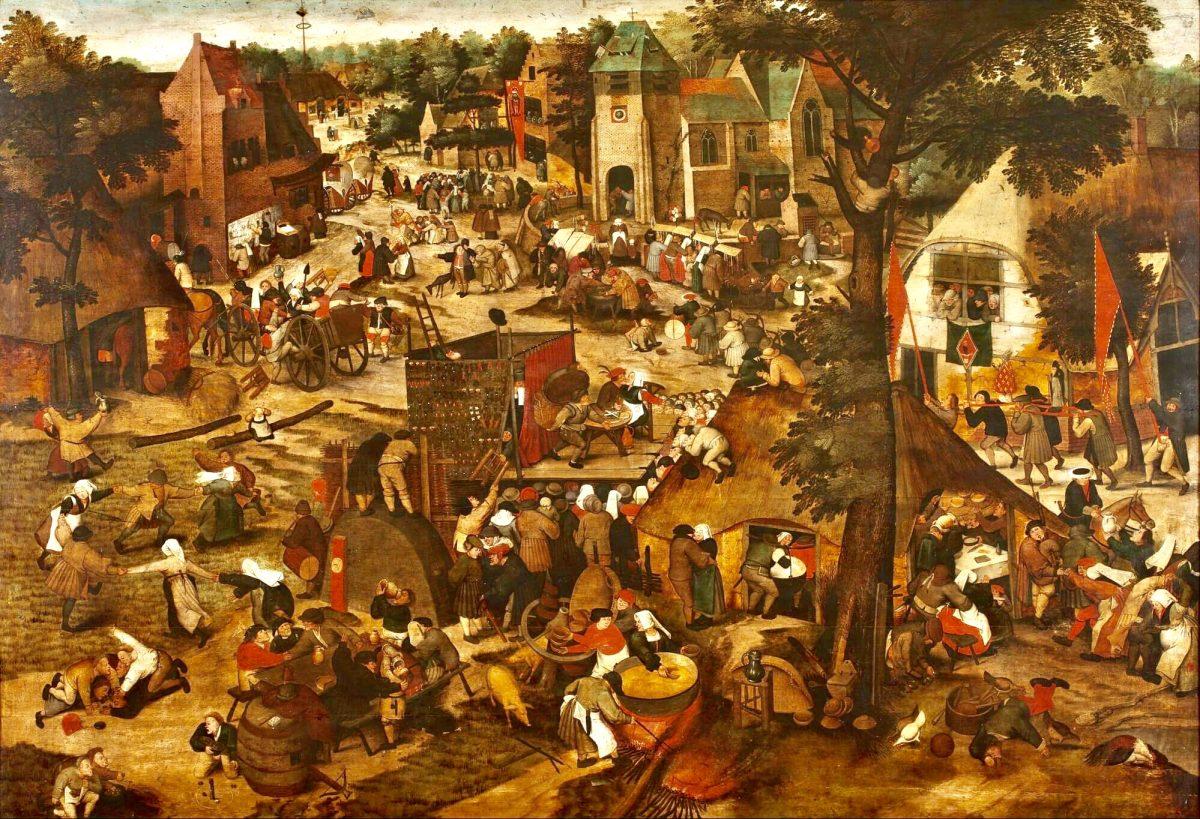
In general, not so much work, you see.
But this gap is filled by private collectors. As many as 19 works by Pieter Brueghel the Younger belong to Valeria and Konstantin Mauergauz. Based on their collection, which I saw at an exhibition in the New Jerusalem Museum (Istra, Moscow Region), I created this article.
Conclusion
Pieter Brueghel the Younger never hid that he copied his father's work. And he always signed them with his own name. That is, he was extremely honest with the market. He did not try to sell the painting more profitably by passing it off as the work of his father. It was his path, but he actually strengthened the foundation laid by his father.
And thanks to Brueghel the Younger, we know about those works of the great master that were lost. And only through the son's copies can we get a more complete picture of the father's work.
PS. It is important to mention that Pieter Brueghel the Elder had another son named Jan. He was only a year old when his father died. And just like his older brother Peter, he never learned from his father. Jan Brueghel the Elder (Velvet or Floral) also became an artist, but went the other way.
In another small article, I just talk about it. After reading it, you will no longer confuse the brothers. And even better understand the famous Brueghel family of artists.
***
If my style of presentation is close to you and you are interested in studying painting, I can send you a free cycle of lessons by mail. To do this, fill out a simple form at this link.
Comments other readers see below. They are often a good addition to an article. You can also share your opinion about the painting and the artist, as well as ask the author a question.
Online Art Courses
English version
Links to reproductions:
Anthony van Dyck. Portrait of Pieter Brueghel the Younger:
https://hermitagemuseum.org/wps/portal/hermitage/digital-collection/02.+drawings/242152
Pieter Brueghel the Younger. Fair with theatrical performance:
https://hermitagemuseum.org/wps/portal/hermitage/digital-collection/01.+paintings/38928
Leave a Reply